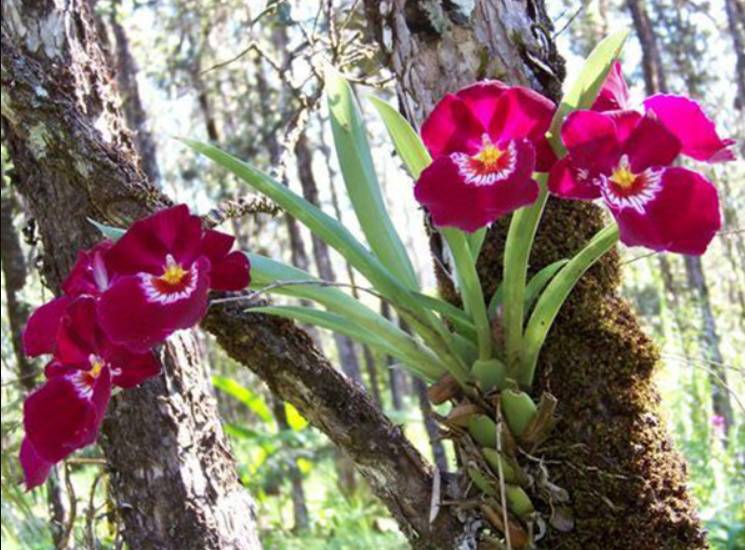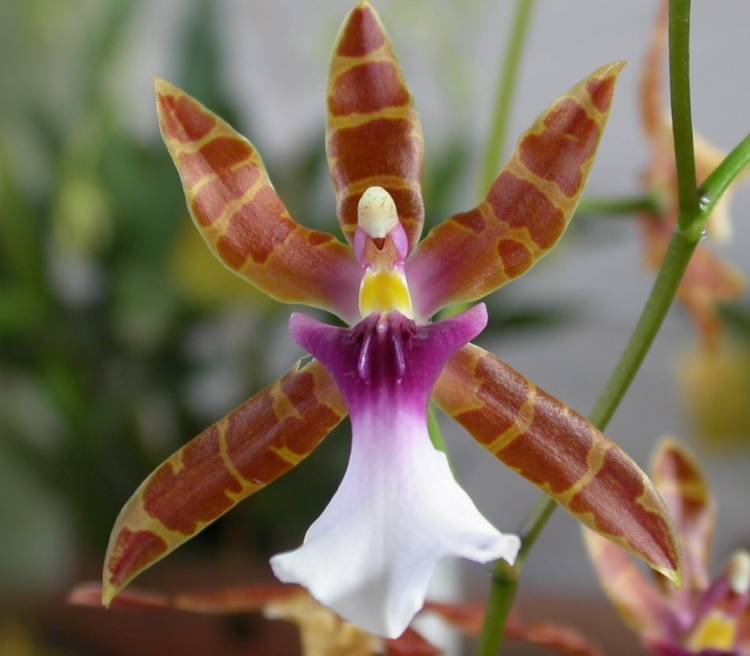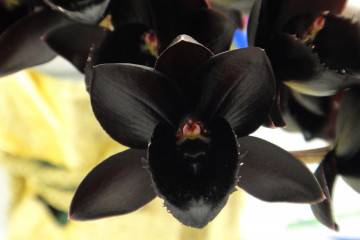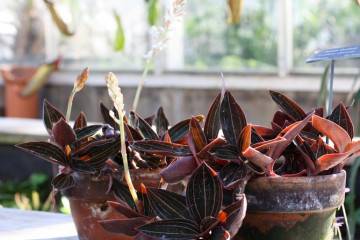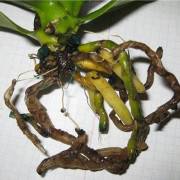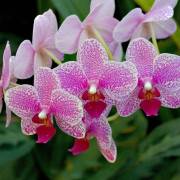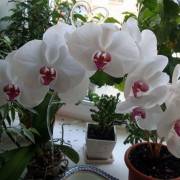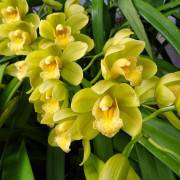Miltonia orchid - home care
Content:
Among the flowers of the orchid family (Orchidaceae), the genus Miltonia (Miltonia) is distinguished by the fact that its representatives in flowering form do not in any way resemble tropical exotic plants, but are more similar to the usual Pansies for growing in temperate climates. Miltonia orchids came to Europe from the equatorial regions of South America, where they live as epiphytic plants on tree trunks, and cannot grow in the open air in the northern part of the globe.
Plant appearance
Miltonia Orchid gets its name from the famous flower collector Viscount Milton. Perennials of the genus Miltonia are divided into 9 species. Thanks to breeding work, about 1000 hybrid varieties of Miltonia orchids have been obtained. The first intraspecific hybrid was registered back in 1889.
In the 19th century, there was another classification of plants of the Miltonia genus. It included bushes with varying numbers of leaves on thickened plant stems. Then they were divided into two genera - Miltonia orchid and Miltoniopsis orchid (miltonia-like).
What plants of the genus Miltonia look like
Miltonia bushes are herbaceous perennials with a horizontal type of development. The root filaments of the bushes grow from the bulbous root of the rhizome. Root growth does not go into the depth of the soil, but to the sides of the rhizome. In the upper part of the rhizome, thickened shoots (pseudobulbs) grow. On them, a pair of lanceolate elongated leaves are formed. At the base of the matured pseudobulbs, flowering stems arise, and then grow.
At the same time, one bush can form several peduncles with bright flowers of pink, white, red, yellow shades. The flower petals are decorated with patterns that resemble eye drops or outlines.
The Miltonia flower itself consists of paired petals of petals, three sepals called sepals, and a lower wide (sometimes forked) petal called a lip (labellum).
Common varieties
Among the flowers of the Miltonia genus there are rare varieties of wild plants and popular hybrid flowers that are found in many orchid lovers.
Popular Miltonia species include:
- Miltonia Sunset - does not require special conditions of detention, when flowering, it emits amazing aromas, its inflorescences look like multi-colored moths fluttering over green leaves. The flowering plant Miltonia Sunset is offered to customers by many garden online stores.
- Miltonia snow-white (Miltonia candida) - the name of the plant is associated with the snow-white lower petal labellum. It blooms in autumn, the inflorescences are collected in groups of 3-5 brown flowers similar to large stars with a diameter of 8-9 cm.
- Miltonia clowesil - the main petals of the inflorescences of the plant are tiger-colored with brown-yellow stripes, the lips are painted in a white-purple mix of shades. 8-10 flowers bloom on the peduncle at the same time.
Miltonia: home care
Plants of the genus Miltonia are thermophilic and photophilous.For the summer keeping of flowers in the house, 24-hour air temperatures in the range of 22-25 ° C and good long-term illumination without direct sunlight are required.
In cold seasons, dormant conditions are created for plants, so the minimum temperature of the content will be the limit of + 15 ° C, the maximum + 20 ° C. But the illumination of plants on short light days should not be radically different from the summer period.
In order for the plants not to change the color of the leaves, the total length of the day should be at least 10 hours.
Watering and spraying
To care for Miltonia orchids at home, conditions close to natural are created. Plants are close to a warm climate with variable humidity. They only tolerate droughts well if they do not last long. But such periods with restrictions on water supply to plants are definitely needed. Stressful situations force the plant to quickly move from growing stem mass to flowering.
Therefore, watering Miltonia orchids, caring for them at home, suggest that the soil substrate in flower pots should be either dry or moistened. Water the flowers only after the potted substrate is dry for 3 days. Then, by immersing the lower part of the flower pot in water for 2-3 hours, the soil composition is moistened.
Spraying of plants is carried out in the heat. At the same time, experts advise in the premises where orchids are grown, to install devices that artificially increase the humidity of the air. The minimum humidity level in the warm season is 60%.
Soil and dressing
Replacing the soil is necessary for flowers in the event that it is completely depleted or rotted. For plants of the genus Miltonia and other orchids, flower shops offer ready-made air and moisture permeable formulations.
The basis of the substrate is sphagnum moss, crushed tree bark, peat, coal. Before use, the soil for Miltonia must be disinfected to prevent the appearance of rot in the root zone of the bushes.
The need to increase the fertility of the substrate occurs during the period of growing green mass (in spring and early summer). For this purpose, special complex fertilizers are used for feeding orchids. They help plants to set a large number of buds and bloom for a long time.
Features of care during the rest period
In conditions of reduced daylight hours and low temperatures for Miltonia orchids, it is necessary to create conditions for a break in growth and reproduction - a dormant period.
Plants under artificial light and warm enough air on their own may not stop growing. Therefore, the flowers are transferred to a room with an average air temperature of + 17 ° C, create partial shade, and reduce the intensity of watering.
Flowering and reproduction of plants of the genus Miltonia
If the plants do not create a dormant period, then mature Miltonia bushes can bloom in the winter. The main flowering dates for orchids of this genus are in the spring and summer. Strong healthy orchids will bloom, flowering duration 1.5 - 2 months.
In natural conditions, in order for the seeds to be viable, orchids are pollinated by insects and hummingbirds. It is for them that plants emit sweet nectar and floral aromas.
The conditions of keeping Miltonia at home, as a rule, do not allow obtaining fertilized seeds.Without the necessary skills and instruments, this is almost impossible. Therefore, reproduction of Miltonia is carried out by dividing the bush.
The orchid must be at least 3 years old. Divide the bush into parts, in each of which, after dividing the plant, at least 2 pseudobulbs and several threads of well-developed healthy roots should remain.
Rooting and transplantation of Miltonia orchids
The transplant of a whole bush or parts of a plant is carried out using a previously prepared and disinfected soil substrate and flower pots. Some growers do not know if it is possible to transplant Miltonia into the bark if there is no industrial substrate at hand. In advice on orchid farming forums, many site visitors point out that along with small pieces of bark, a layer of moss and drainage materials should be placed in flower pots.
The root system of the part of the plant prepared for transplantation is placed directly on wet moss; under it there should be a layer of bark that absorbs moisture well. Cover the plant roots with a thin layer of moss. You need to take care of the transplanted plant in the same mode as before dividing the bush.
Special care is needed for flowers that have dried or rotted root filaments. Resuscitation of Miltonia is carried out in 3 stages:
- shorten root filaments to living tissue;
- the rhizome and the remnants of the roots are treated with a fungicidal preparation and a growth biostimulant;
- grow new roots in a mini-greenhouse.
Diseases and pests of orchids
Orchids that are not properly irrigated can develop fungal infections that lead to root rot.
In addition, Miltonia orchids can suffer from bacterial blight, powdery mildew, gray and black rot. The larvae of mealybugs, whiteflies are able to gnaw the roots, and aphids, spider mites harm the surface parts of flowers.
Nature gave people beautiful tropical plants - orchids, the beauty of which sometimes overshadows many flowering plants of temperate climates. Of course, special conditions are needed for growing orchids, some material costs, but a florist who is keen on orchids will make many sacrifices to admire these flowers.
